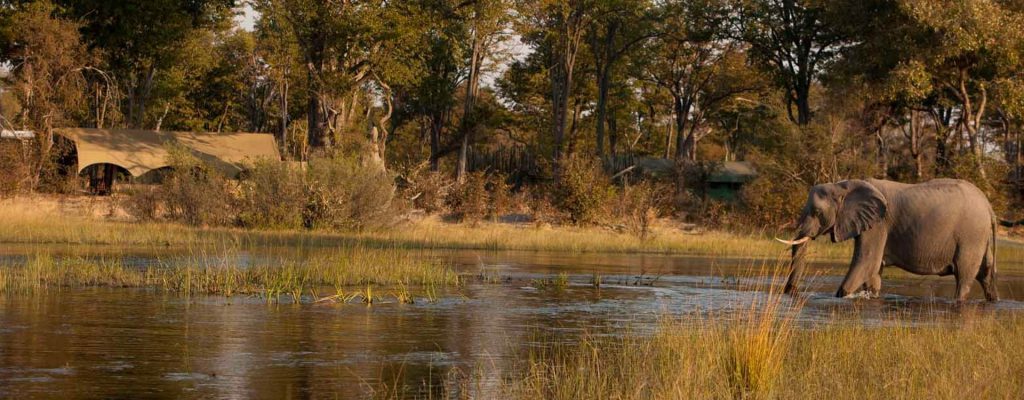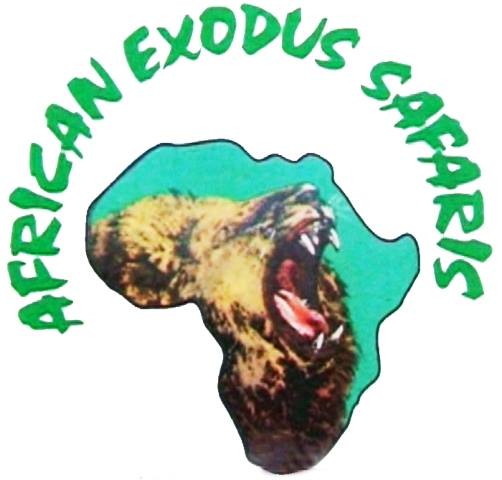Welcome To Botswana
One of Southern Africa’s most exclusive safari destinations, Botswana is a true wildlife haven. Its landscapes are as diverse as they are beautiful, ranging from the lush wetlands of the Okavango Delta to the arid drama of the Kalahari Desert. Botswana is also one of Africa’s most stable countries, with a conscientious tourism economy and a relatively high standard of living.
We guarantee you will have incredible stories to tell …

Geography
Twice the size of Arizona with an Area of 582,000 sq. km. (224,710 sq. mi.), Botswana is in south-central Africa, bounded by Namibia, Zambia, Zimbabwe, and South Africa. Most of the country is near-desert, with the Kalahari occupying the western part of the country. The eastern part is hilly, with salt lakes in the north. Capitals – Gaborone (pronounced ha-bo-ro-neh), Political system
Independence: 30 September 1966 Botswana, one of Africa’s most stable countries, is the continent’s longest continuous multi-party democracy. It is relatively free of corruption and has a good human rights record. On Festus Mogae’s retirement in April 2008, Ian Khama (the son of former President Sir Seretse Khama) became the country’s fourth President.
Economy
Since independence, Botswana has had the highest average economic growth rate in the world, averaging about 9% per year from 1966 to 1999. Growth in private sector employment has averaged about 10% per annum over the first 30 years of independence. At the start of the 21st century, however, the economy of Botswana stagnated up until the early 2010s when it registered for the first time since the economic boom a GDP growth up above the 6-7% target. Botswana is also commended for the site of Africa’s longest and among the world’s longest economic booms (which almost surpassed that in Asia’s largest economies). The relatively high quality of the country’s statistics means that these figures are likely to be quite accurate. The government has consistently maintained budget surpluses and has extensive foreign exchange reserves.
Tourism
Botswana is proudly recognized as a leading sustainable tourism destination. Botswana’s principal tourist attractions are its game reserves, with hunting and photographic safaris available. Other attractions include the Okavango Delta region, which during the rainy season is a maze of waterways, islands, and lakes. The tourism industry also helped to diversify Botswana’s economy from traditional sources such as diamonds and beef and created 23,000 jobs in 2005.
Population
Botswana is one of the world’s most sparsely populated countries. With an estimated 2015 population of just 2.05 million, Botswana has a population density of just 3 people per square kilometer (9/square mile), which ranks 231st in the world. Only 12 sovereign states and dependent territories have a lower density, including Mongolia, the Falkland Islands, and Iceland.
Currency
The pula is the currency of Botswana. It has the ISO 4217 code BWP and is subdivided into 100 thebe. Pula literally means “rain” in Setswana, because rain is very scarce in Botswana — home to much of the Kalahari Desert — and therefore valuable and a blessing.
Climate
Botswana’s climate is semi-arid. Though it is hot and dry for much of the year, there is a rainy season, which runs through the summer months. Rainfall tends to be erratic, unpredictable and highly regional. Often a heavy downpour may occur in one area while 10 or 15 kilometres away there is no rain at all. Showers are often followed by strong sunshine so that a good deal of the rainfall does not penetrate the ground but is lost to evaporation and transpiration.
Communications
Most of Botswana is networked by automatic telephone exchanges, with public telephones in even the most remote places. Cellular phone coverage is provided Mascom, Orange and be Mobile. Mobile Sim cards are available in most supermarkets and service stations. All major towns in Botswana are network covered, as well as portions of the national highway.
Provinces
Botswana organizes its regional government structures by districts instead of provinces, Central; Ghanzi; Kgalagadi; Kgatleng; Kweneng; North East; North West; South East; Southern.
National Symbols
The Botswana flag was officially adopted on September 30, 1966. The colors on the flag correspond to those on the national coat of arms. The blue represents water; the white-black-white bands depict the racial harmony of the people as well as the pluralist nature of the society. They are inspired by the coat of the zebra, the national animal. Other significant national emblems include: National bird: Kori Bustard; National animal: the Zebra; National flower: Sengaparile (Devil’s Claw); National Tree: Morula
Languages While English is the official language and Setswana the national language, there are over 20 other languages spoken in Botswana, which are mostly used by the non-Setswana-speaking groups. Sekalanga, spoken by the Bakalanga, is the most commonly used of these languages.
Religions
Officially Botswana is a Christian country, although the number of practicing Christians is estimated at only around 20% of the population. These mostly belong to the Catholic, Anglican, Methodist, Lutheran and Zion Christian Church (where its members are noted for the khaki dress worn when attending). It is presently estimated that about one-half the population follows traditional African religions.
Water
Tap water is potable. However, ensure that you take bottled water with you when travelling to remote rural areas and the bush.
Animals and Plants
The great fauna and flora in Botswana makes the country a haven of great beauty. This fauna and flora plays a leading role in the tourism sector of Botswana as the larger part of 2 million tourists who visit Botswana enjoy the country’s habitat and wildlife. Although a significant part of Botswana is covered by savannah, the country has adequate vegetation to support tens of thousands of wild animals. Botswana is a ‘natural game reserve’ for most wildlife found in southern Africa. The country boasts 164 species of mammals, 550 species of birds, 157 species of reptiles, 38 species of amphibian and over 70 species of fish mostly within the Okavango Delta.
Electricity
The Botswana electricity supply is 220/240 volts AC. With a few exceptions (in deep rural areas) electricity is available almost everywhere.
Airports
There are a number of airports in Botswana. Some of them are domestic and some are international. The major international airports of Botswana are Gaborone airport and Maun airport.
Travel by Road and Rail
Botswana has an extensive road infrastructure including national highways and secondary roads. Speed limits are set at 120 kilometres on highways; 100 kilometres on secondary roads and 60 kilometres in urban areas. Botswana’s railway system, located in the east of the country, is one of the newest and one of the relatively few in the world whose entire coaching fleet is fully air-conditioned. Day trains run between Gaborone and Francistown, while overnight trains run between Lobatse and Bulawayo, serving Gaborone and Francistown en route.
Entry requirements
A passport with at least six months of validity remaining is required. Visas are required by all nationals except those of Commonwealth countries, Austria, Belgium, Denmark, Finland, France, Germany, Greece, Iceland, Rep. of Ireland, Italy, Liechtenstein, Luxembourg, Namibia, Netherlands, Norway, Pakistan, Western Samoa, San Marino, South Africa, Sweden, Switzerland, Uruguay and USA. Visas ARE required for nationals of Ghana, India, Mauritius, Nigeria and Sri Lanka. Stay permits, which are extendable up to 30 days, are issued at the border. Visitors must also have outgoing travel documents and sufficient funds to finance their stay.
Health and safety
Botswana can be considered one of the safest travel destinations in Africa but as with all places around the world certain precautions have to be taken into account before travelling. Botswana is a malaria risk area. Anti-malaria medication is a must – and you should consult your doctor in this regard. Anti-malarial medication should commence at least a week before leaving for your trip. Make sure you have the latest safety tips from the establishment where you will be staying and take common sense precautions as you would when travelling.
Some useful information on Travelling in Botswana
Credit Cards: Very important: Please never leave your credit card out of sight, under no circumstances.
Cash withdrawal: Credit and debit cards are now accepted at most lodges and can be used to make payments. International Visa and MasterCard are usually accepted throughout Botswana. However, American Express and Diners Club are not accepted by the banks in Botswana, and therefore not at the camps either. Virtually all outlets charge a significant premium for using a card, 5% to 10% is common.
Very important: Please never accept any help from strangers
Banking Hours in Botswana: most banks in Botswana are open from 09h00 to 14h30 on weekdays (Mon, Tues, Thurs & Friday), and 08h15 – 12h00 on Wednesdays and Saturdays. Banks are closed on Public Holidays and on Sundays.
Fuelling (gas) stations: accept cash and credit cards. Most of the bigger towns have fuelling stations available. When travelling between towns, fill your gas tank at every station, as distances between gas stations are great.
Animals on roads:
Take special care near animal crossing warning signs or signs warning of the absence of fences. The signs are there for a reason. If you see one animal, expect that there are others nearby. Use your high beams whenever possible. They will give you more time to spot and react to animals in the road. Slowing down a little gives you and the animal more time to react – Be especially cautious at night Shopping hours in Botswana
Health & Safety tips on your tour in Botswana
Sun protection Botswana is renowned for its warm sunny climate, even during winter. Visitors should wear a waterproof SPF sunscreen of at least 20 for the body and 30 for the face. Children and those with fair skin should wear SPF50 and hat especially between 11am and 4pm, reapplying frequently, especially after swimming. Sunglasses are also recommended as the African sun glare is also strong. Even on days when there is cloud cover, the same precautions should be taken, as the sun’s rays are magnified through the cloud. There’s no point in getting badly sunburned and then not enjoying your holiday to the fullest.
Ticks Generally out in the early spring can be found in long grasses and trees. They may carry tick-bite fever, however it is easily treated. To help protect yourself, wear long trousers tucked into white socks, making the ticks more visible, and a hat to protect against ticks falling from trees. Always check your clothing and body for ticks, especially the legs, behind the knees, groin area, as well as the scalp and behind the ears.
Bilharzia Avoid drinking or swimming in stagnant water that is not flowing or inhabited by fresh water snails. It’s generally thought that that the Okavango Delta is not infected with bilharzia. Weather & Climate
